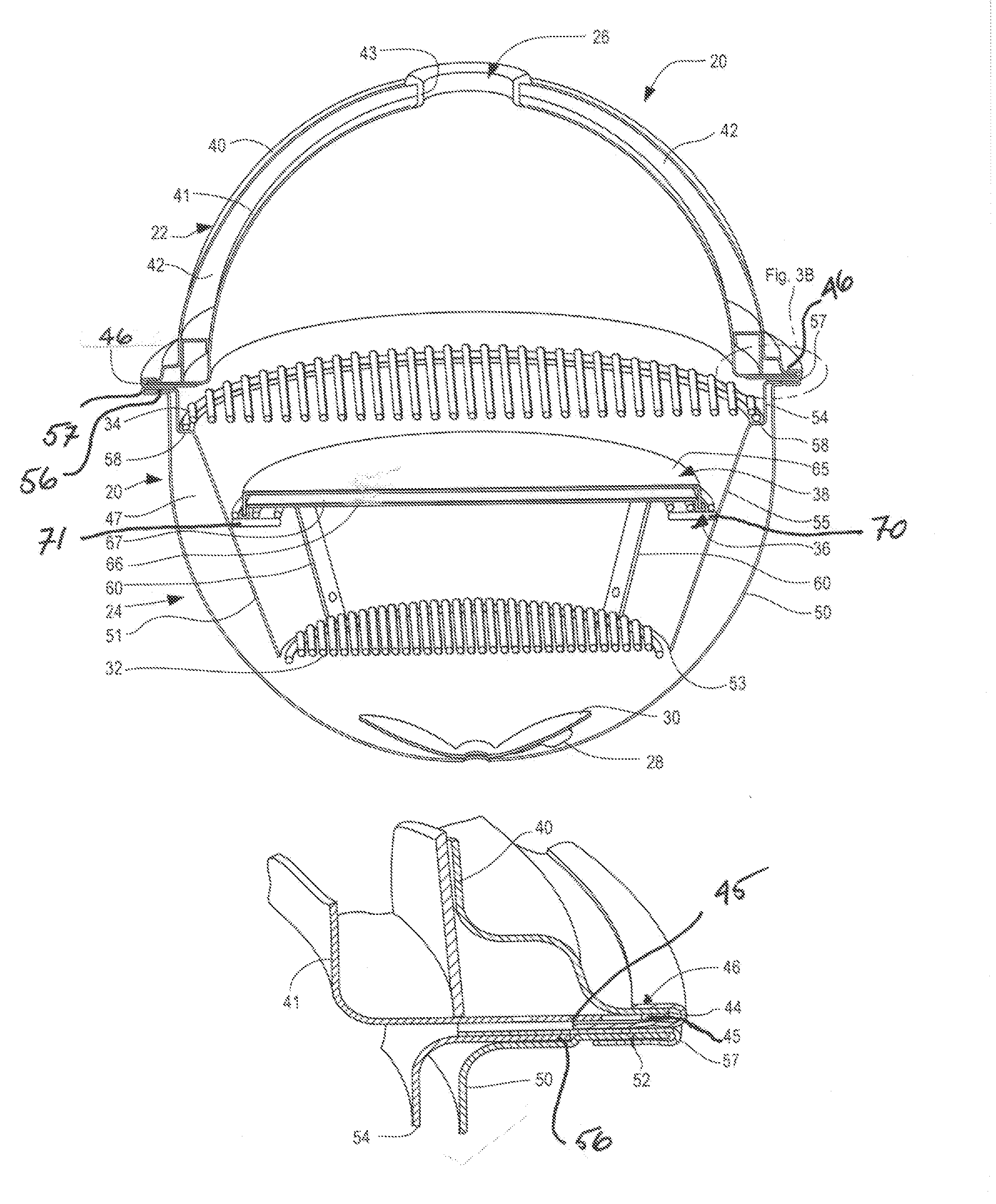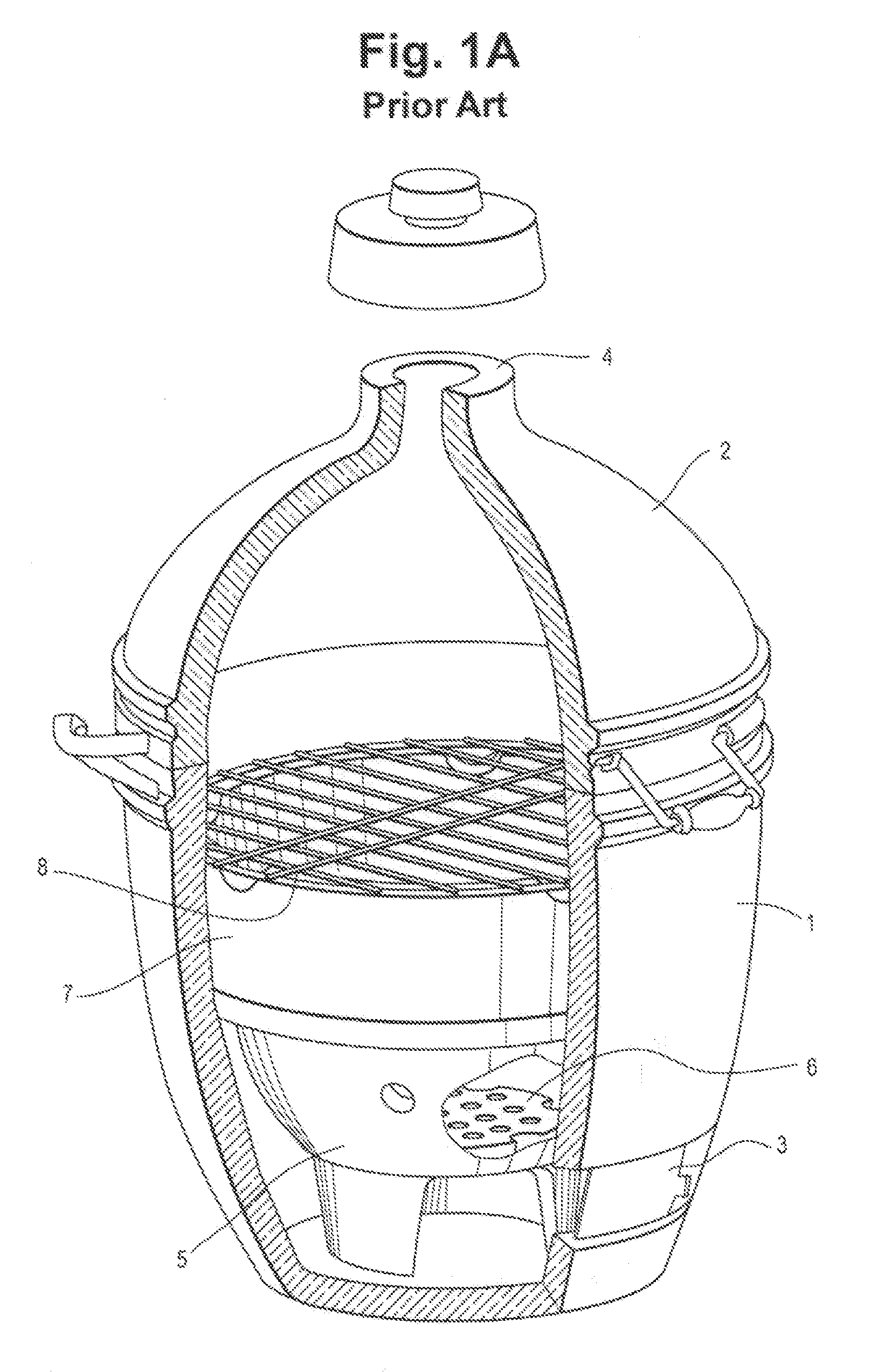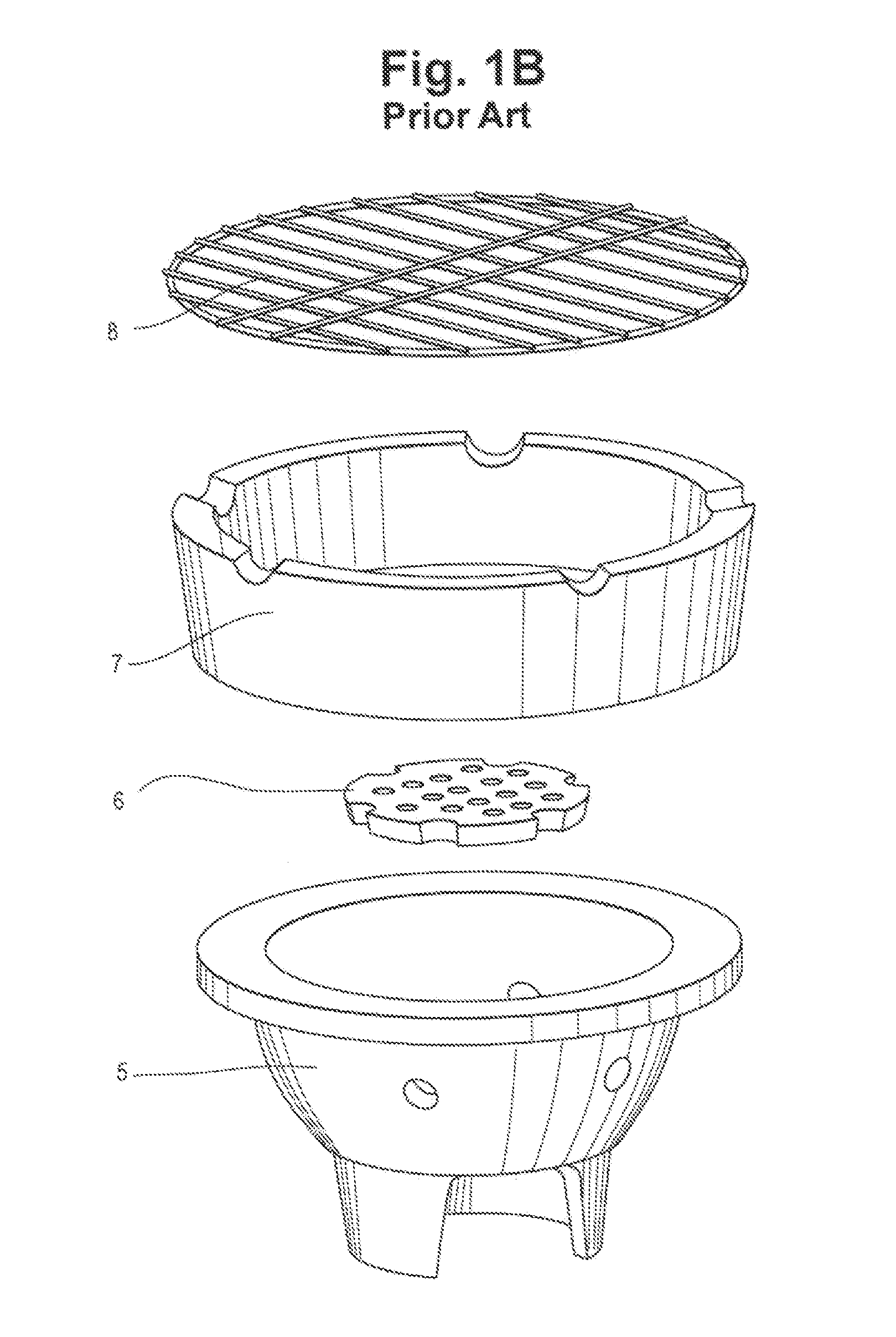Fuel efficient grill for direct and indirect cooking
a fuel-efficient, grill technology, applied in the field of grills, can solve the problems of high cost of shipping and manufacturing, excessive weight and fragility of ceramic grills, and all the problems of commercially available kamado-type grills, so as to improve air flow, reduce fuel consumption, and cook more efficiently
- Summary
- Abstract
- Description
- Claims
- Application Information
AI Technical Summary
Benefits of technology
Problems solved by technology
Method used
Image
Examples
Embodiment Construction
[0056]Set forth below is a description of what is currently believed to be the preferred embodiments or best representative examples of the inventions claimed. Future and present alternatives and modifications to the embodiments and preferred embodiments are contemplated. Any alternatives or modifications which make insubstantial changes in function, purpose, structure or result are intended to be covered by the claims of this patent.
[0057]Examples of the present inventions may be seen by reference to FIGS. 3A-8B. A preferred embodiment of grill 20 is shown in FIG. 3A. Although preferred, but not a limitation, the overall shape is similar to, but slightly more elongated than, the typical Weber® kettle. The silhouette of the Weber kettle grill is a registered trademark of Weber-Stephen Products LLC. In addition, the preferred material for construction of the lid 22 and grill body 24 is porcelain coated steel or stainless steel. The grill 20 includes a lid 22 and a grill body 24. Lid ...
PUM
 Login to View More
Login to View More Abstract
Description
Claims
Application Information
 Login to View More
Login to View More - R&D
- Intellectual Property
- Life Sciences
- Materials
- Tech Scout
- Unparalleled Data Quality
- Higher Quality Content
- 60% Fewer Hallucinations
Browse by: Latest US Patents, China's latest patents, Technical Efficacy Thesaurus, Application Domain, Technology Topic, Popular Technical Reports.
© 2025 PatSnap. All rights reserved.Legal|Privacy policy|Modern Slavery Act Transparency Statement|Sitemap|About US| Contact US: help@patsnap.com



